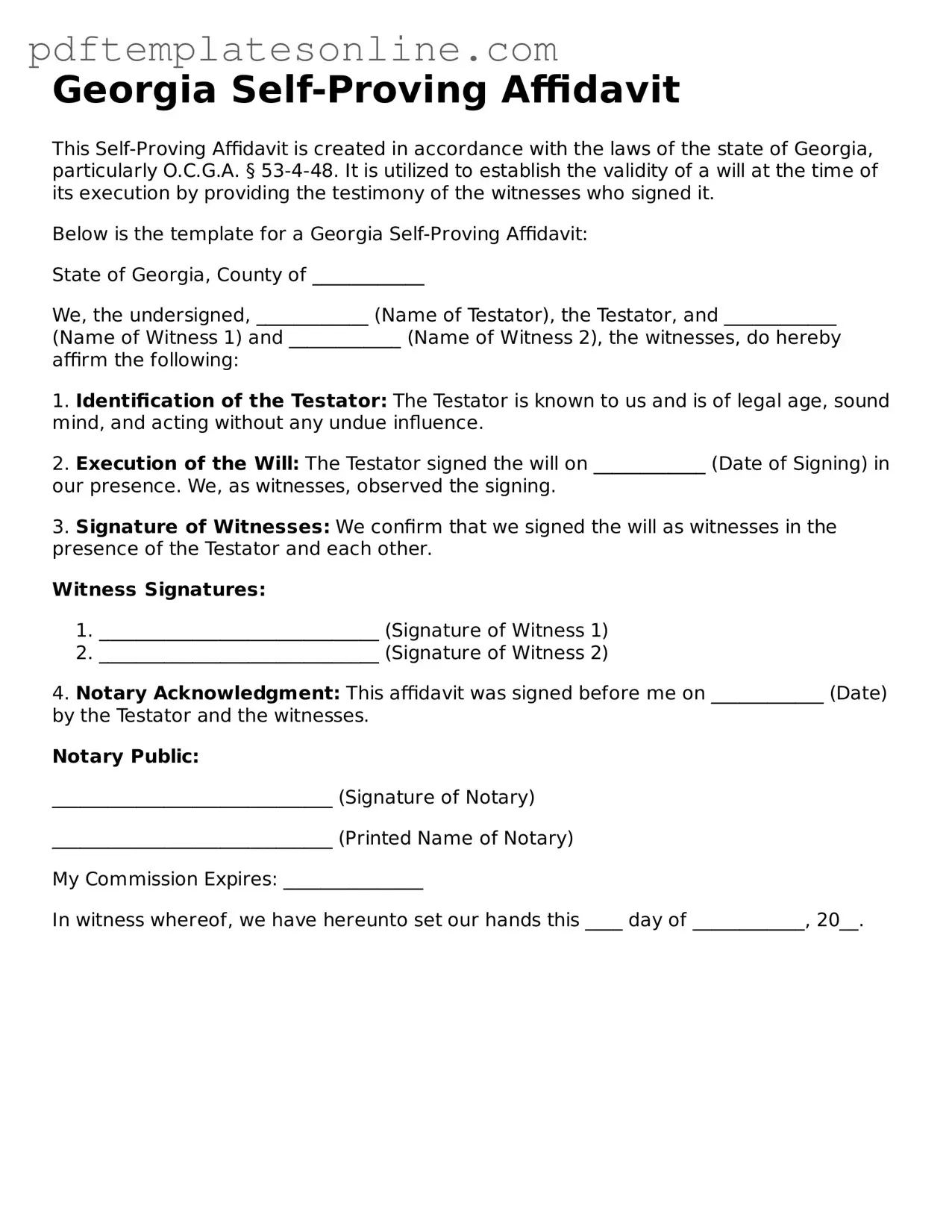Filling out the Georgia Self-Proving Affidavit form can seem straightforward, but many people make common mistakes that can lead to complications. One frequent error is failing to have the affidavit signed in the presence of a notary. This step is crucial, as the notary's acknowledgment is what gives the affidavit its legal weight. Without this signature, the document may not be accepted in court.
Another mistake often made is not including all required information. The form requires specific details about the testators and witnesses, including their names and addresses. Omitting any of this information can result in the affidavit being deemed incomplete. It is important to double-check that every field is filled out accurately before submission.
Some individuals forget to date the affidavit. A date is essential, as it establishes when the document was executed. Without a date, it may be difficult to determine the validity of the affidavit in relation to the will it supports. Always remember to include the date of signing in the designated area.
Additionally, people sometimes use incorrect witness signatures. The Georgia Self-Proving Affidavit requires that the witnesses who sign the document are the same individuals who witnessed the signing of the will. If different individuals sign the affidavit, it can create confusion and potentially invalidate the document.
Another common oversight is not ensuring that witnesses are of legal age. In Georgia, witnesses must be at least 14 years old. If a witness is not of age, their signature will not hold up in court. It’s crucial to verify the age of all witnesses before proceeding.
Finally, some individuals neglect to keep a copy of the completed affidavit. After the form is filled out and signed, it is wise to retain a copy for personal records. This can be beneficial if questions arise in the future regarding the will or the affidavit itself. Keeping thorough records helps ensure that all parties are on the same page.
